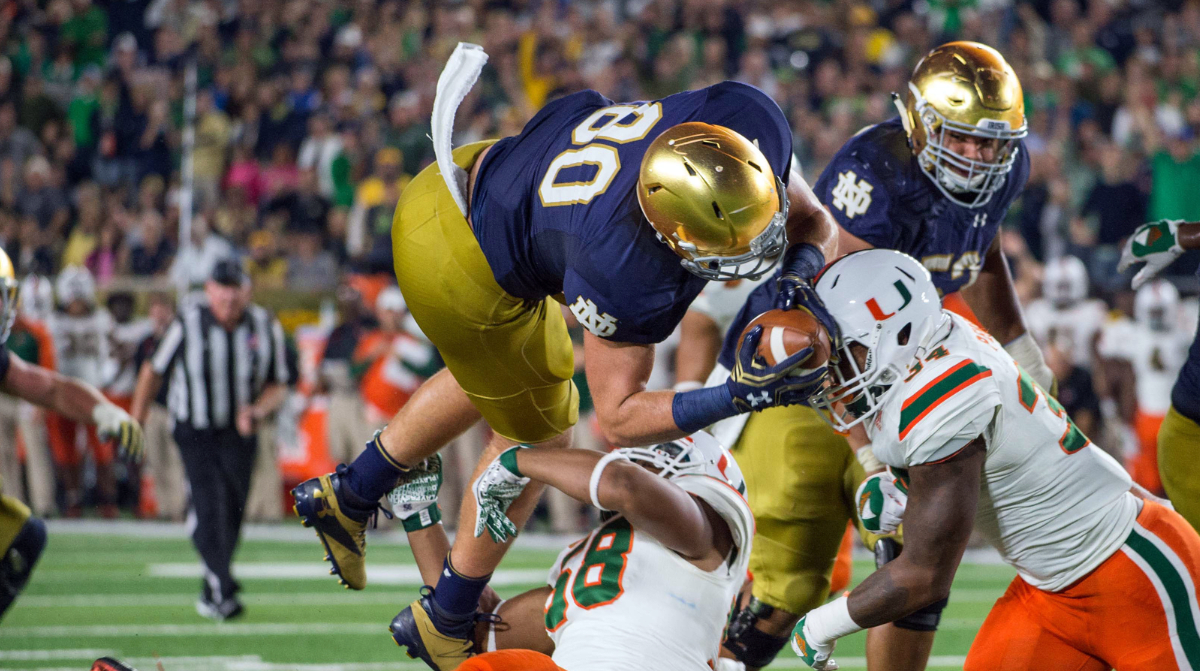Notre Dame's season opener against Miami was supposed to be a statement game, a chance to show the nation they were a legitimate contender. Instead, it became a painful lesson in execution and a stark reminder that even the most highly-touted teams can stumble. While the final scoreline speaks volumes, dissecting the game through specific statistical markers reveals a more nuanced picture of just why the Fighting Irish fell short in South Florida. The five key numbers highlighted below reveal a team that struggled to control the tempo and ultimately succumbed to self-inflicted wounds.
First, the turnover margin: a staggering -3. Three turnovers gifted Miami crucial field position, effectively handing the Hurricanes easy points. In a game as closely contested as this one, those three possessions – translated into Miami scores – represent a significant swing in momentum and ultimately proved insurmountable. This isn't just about luck; it points to a lack of ball security in crucial moments, a fundamental flaw that must be addressed immediately if Notre Dame hopes to achieve its ambitious goals.
Second, the third-down conversion rate – a dismal 28%. A potent offense hinges on its ability to convert on third down, keeping drives alive and wearing down the opposing defense. Notre Dame's failure to do so consistently led to stalled drives and punts, giving Miami’s defense ample opportunity to rest and regroup. This inefficiency on third down significantly hampered Notre Dame's ability to maintain offensive rhythm and control the clock.
Third, Miami's rushing yards: a dominant 220. While Notre Dame’s defense boasts a reputation for strength, they were unable to contain Miami’s ground game effectively. Allowing that many rushing yards opened up play-action passing opportunities for the Hurricanes and consistently kept the Fighting Irish defense on their heels. This inability to control the run paved the way for Miami's offensive success and added pressure on Notre Dame's already struggling offense.
Fourth, the penalty yardage differential: +50 yards for Miami. Penalties are often indicative of a team's discipline and composure under pressure. Notre Dame’s undisciplined play, leading to this significant disparity in penalties, repeatedly halted drives and extended Miami's possessions. Self-inflicted wounds, in the form of penalties, are completely avoidable and speak to a need for increased focus and attention to detail during the game.
In conclusion, the loss to Miami wasn't simply a matter of one missed play or a single individual's performance. These five numbers – turnover margin, third-down conversion rate, Miami’s rushing yards, penalty yardage – paint a clear picture of systemic issues that plagued the Fighting Irish. Ball security, offensive efficiency, defensive run stopping, and avoiding penalties are all critical areas requiring immediate attention if Notre Dame hopes to rebound and fulfill its potential this season. The road ahead is long, but the lessons learned from this opening defeat are invaluable for the team's growth and future success.



0 Comments